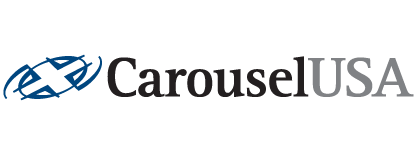Electrical FAQs
1 . What is the incoming power needed for my control panel?
A: Usually, the incoming power is 220VAC, Single Phase, 15A circuit. Unless otherwise is specified upon approval.
A: For larger commercial turntables that have 480V available, 480V is preferred.
2. What is the output power to the motor?
A: Output power to motor is commonly240VAC, Three Phase, 4.2 Full Load Amps. We prefer to use VFD’s (variable frequency drive) on our controllers since they can vary motor/turntable speed and have control over the motion profile.
3. How many conduits do I need for my MC3(photo studio) controls?
A: We recommend running 2 separate conduits to the motor pit. One for motor power and the other for encoder signal. If only one conduit is available, it MUST be big enough to house 8 conductors and all conductors must be rated the same. Size conduits per local code.
4. How far should I mount my control panel from the turntable?
A: We recommend a mounting distance of no more than 50 ft from your turntable.
5. Can I mount my controls outdoors?
A: Our controls are rated for indoor applications, but outdoor controls are available upon request.
6. What is the range on my remote?
A: Depending on the model, our standard remote offers a range of 1000 ft line of sight.
7. How many conductors do I need to run from my control panel to the motor?
A: For a Standard Control Panel (CW/CC W movements) you will need 4 conductors from your control panel to the motor.
For an MC3(photo studio) Control Panel out will need a total of 8 conductors, 4 for motor power and 4 for encoder signal.
Mechanical FAQ’s
1 . Does Carousel USA make custom turntables and lifts?
Yes! We can make small modifications to our standard equipment or completely one-off designs.
2. What does Dead Load and Live Load mean on general arrangement drawings?
Dead Load: The load imposed by only the static weight of the equipment.
Live Load: The Load imposed by the payload (typically vehicle weight) plus the load imposed by the weight of the equipment.
3. How do I measure floor flatness for surface mount turntables?
Follow floor surveying procedure shown on document 40SSV INSTALLATION SITE FLATNESS or 55SSV INSTALLATION SITE FLATNESS
Maximum allowable slope is 3% for surface mounted turntables
4. What is the maximum allowable slope for surface mounted turntables?
The maximum allowable slope is 20
5. What is the required pit depth and what is the pouring process for flush mount turntables?
This depends on the specific turntable style you are opting for, but standard turntables with steel, aluminum, or wood top surface require a 12.75″ pit depth and turntables with a concrete top surface require a 20″ pit depth with the exception of outboard driven concrete tables requiring a 15″ pit depth.
The pouring process is laid out in document Carousel USA Best Practices Checklist 160707.
6. What is the maximum allowable slope for flush mount installations?
The maximum allowable slope is 70 and the bottom of the pit must be on the same slope (parallel) as the top edge surface to ensure a desirable flush and finished look.
7. How does the typical installation process go, phases and processes and other trades needed?
Typically pour pit floor and curb, install turntable at X hours, install trim ring, grout pack mortar ring, pour last concrete.
